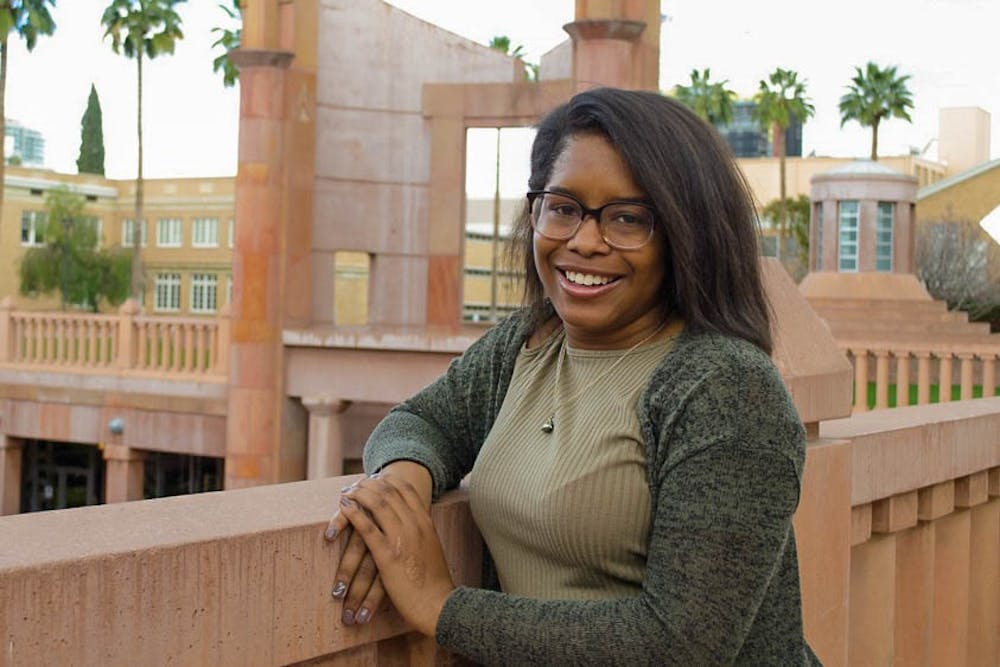A Council of Coalitions exists at Arizona State University, made up of the many coalitions representing ASU minorities. These groups often work together to present programs and events for students and the community.
Among the Council is the Black African Coalition, which Faith Brown, a general body member of the BAC and sophomore studying psychology, said is focused on increasing Black African enrollment and student retention at ASU.
Also among the Council is the American Indian Coalition. Savannah White, the facilitator of the coalition and nutrition and health solutions sophomore, said the group is focused on giving a voice to all Indigenous students at Arizona State and providing a completely accurate representation of who the Native American people of ASU really are and really can be.
Along with the BAC and AIC, the Council of Coalitions is also made up of the Rainbow Coalition which includes all the LGBT+ groups on campus, the Coalition of International Students, the Womyn’s Coalition, El Concilio and the Asian/Asian Pacific American Student Coalition.
The coalitions all aim to serve the minorities they represent in whatever way is most suitable for that particular group. To further pursue this goal, the coalitions have seen an opportunity to work together on issues that may affect more than just one group.
“It’s just a really nice way to find a support system for whoever and whatever you identify with,” Brown said about the Council.
White said the Council of Coalitions is comprised of the presidents and vice presidents of each coalition. They meet up and talk about programming and how they can help the community as a whole by teaming up or lending a helping hand.
Brown said one example of this collaboration is a project that the Womyn’s Coalition and the BAC are working on. She said there is a program that will help to educate students on what they need to know living in the justice climate of today.
The project will include events that aim to increase voter registration and general law knowledge to empower students. One such event that Brown is especially involved in organizing will be the screening of Ava DuVernay's 2016 film “13th,” a documentary on incarceration in the U.S. following the passing of the Thirteenth Amendment to the United States Constitution.
White said the AIC is also working on an event regarding missing and murdered Indigenous women with the Womyn’s Coalition, who reached out to the AIC to combine the large audiences both coalitions can reach during the month of April, which is Sexual Assault Awareness Month.
American Indian Culture Week also falls in April, which the two coalitions saw as an opportunity to educate the student body on things that they may not be so familiar with, White said.
A previous event that the coalitions collaborated on was a “My Culture is not a Costume” event in October addressing people culturally appropriating Halloween costumes that perpetuate harmful stereotypes.
“We tried to get it to be with all the coalitions because the majority of us could relate to (the cause)," she said.
Cristina Ortiz, a freshman studying theater and a marketing intern for the Asian/Asian Pacific American Student Coalition, said another way the Council of Coalitions works together is through marketing assistance.
Ortiz said the Coalitions help each other advertise for upcoming events by sharing each other’s event pages on social media to spread awareness on whatever the issue or event may be.
Ortiz also spoke of a day-long retreat that the Council of Coalitions put on at the beginning of the semester to all meet and get acquainted.
"It was a lot of leadership activities, and we talked about our values and how each of the coalitions functions and how differently the leadership is set up," she said.
The Council also has biweekly meetings that are a good time for coalitions to ask for help and seek out opportunities “to reach an even bigger population," White said.
In these meetings, the coalitions aim to spread each of their messages across the entire community at ASU through collaboration, volunteer work and social media work.
White said the Council meetings also serve as an opportunity for the Council itself to learn what it is capable of and to test the limits of their power and influence as well as learn from each other as a whole community of activists.
“The Council of Coalitions is really working to make ASU an environment for everybody,” Brown said.
Reach the reporter at japere38@asu.edu or follow @jsphprzprof on Twitter.
Like The State Press on Facebook and follow @statepress on Twitter.




